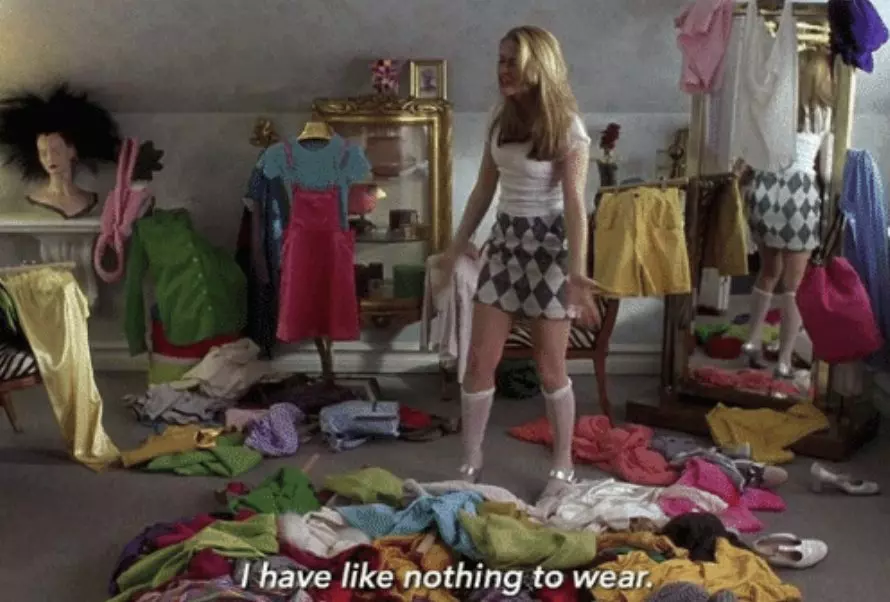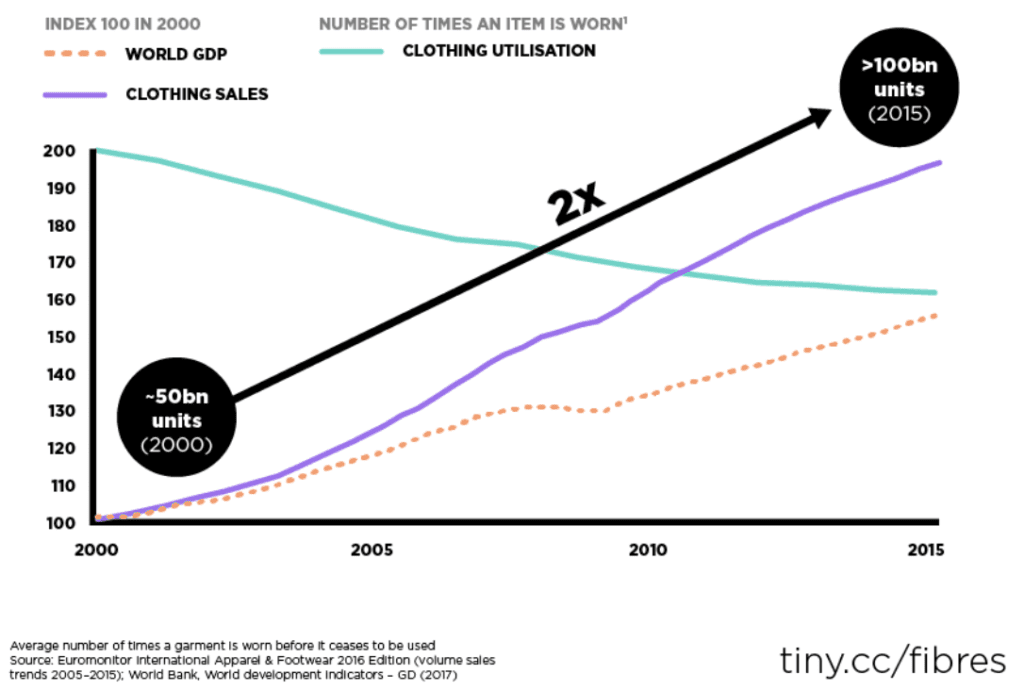We all couldn’t be happier that 2020 is almost over. We dream of waking up to a COVID-free world on January 1st. While these fantasies may be unrealistic, we can still hope for a better 2021. The new year is a time for a fresh start – replacing old habits with new, developing healthier relationships, and creating a positive image for ourselves.
We normally turn to self-help books, gym memberships and professional development courses but we suggest starting 2021 on a different foot. Close those self-help books and open your closets, because a closet cleanse may be just what you need for a stress-free year and a more sustainable fashion industry. Now that’s a win win!

Maybe you didn’t even know your closet was causing you stress, but perhaps you can relate to the occasional outfit-picking meltdown. There are many reasons we overindulge with fashion – from feelings of self-doubt, to a need for control, to socioeconomic comparison, just to name a few… not to mention the wide variety of garment hefts required to live in a country with four seasons. There is much to be prepared for but when does having too much begin to hinder our happiness?
Psychologist Barry Schwartz can tell you all about the paradox of choice and why too many options can cause anxiety, dissatisfaction and regret. Schwartz explains that the common misconception of our time is that to achieve our optimal sense of wellbeing and freedom, we must have an abundance of choices. However, when choices are maximized, the outcome can be paralysis rather than liberation. I’m sure I’m not the only one who has stood in a grocery store aisle for 20 minutes, conflicted about which variety of tea I should buy based on the various brands, flavours, packaging, caffeine content and prices. While I’m grateful for our free markets, I’m also completely overwhelmed by the number of options. Let’s step back into our own closets where we actually control how many t-shirts, jeans and sweaters we own, and ask why we make the daily decision of what to wear so difficult by owning way more than we need? Not only that but we continue to buy more than we even use so a ton of our own wardrobe sits idle and contributes to the daunting task of dressing in the morning.

Take a look at this graph from The Ellen MacArthur Foundation, depicting the paradox between increasing clothing sales and declining clothing utilization. When we buy more than we need, we’re hurting:
- Ourselves, by having too many options
- The planet, by stimulating overproduction thereby causing textile production-related pollution
- Labour workers around the world, by supporting fast fashion companies that don’t pay a living wage and/or allow for unsafe working conditions
So, I challenge you to add to your new year’s resolutions this December 31st. Only keep the things that a) you L.O.V.E. and b) look and feel good on you, and ditch the things that are anything less than your favourites. Maybe you have a beautiful shirt that you think you ought to love but it just doesn’t fit right. Two words: Toss it – and by toss, we mean from your own wardrobe but be sure to donate it to a friend/family member, or a secondhand store, to give it a second life. Stores do a good job of selling us the things they think we want but I’m daring you to choose your own favourites instead of letting others decide for you. Here are some helpful steps you can follow to trim your wardrobe to a more sustainable (and usable) amount:
- Admit you have too much stuff and get motivated to do something about it. This is an act of self-love. Declutter your life to make room for what matters. Maybe you’ve been putting off “you” time because there simply isn’t enough time in the day. Now you can use that extra 30 minutes you may have spent fretting over what to wear to do something to improve your daily life.
- Pick out only your favourite items – things you look forward to wearing and NOT what you should wear. Put these in your “keep” pile.
- Pick out all the clothes that you dislike, or only wear because you feel guilty for not wearing them, or for those “just-in-case” occasions that have never once happened. Embrace what you truly want to wear and give yourself permission to dismiss the items that just aren’t your style. Put these clothes in the donation pile.
- Example… I had this hot pink hoodie from 10 years ago that I hadn’t worn in ages but held onto it just in case a neon themed party was just around the corner. I was relieved to finally get rid of it. If you’re struggling with this mentality, remind yourself that renting or borrowing clothes for special events is always an option. Check out dresst.ca for a Canadian-based renting service.
- For the clothes that remain, go through each item individually and be honest. Do you look forward to wearing it? How often do you wear it? When was the last time you wore it? Is it adding value to your life? These are all tough questions, I know. For the clothes that you’re not ready to say goodbye to, put them in a separate closet or store them away. Wait a few weeks or months and if you haven’t thought about those items and haven’t missed them, consider repurposing or donating them. Your life is better off without those items taking up precious space.
- Step back and admire your reduced closet. Sigh with relief. Jump for joy. Give yourself a pat on the back for doing something nice for yourself. Now, if these aren’t your immediate emotions, don’t panic. The feeling precipitated from a newly emptied closet might be discomfort at first but resist the urge to run to the mall to fill it back up. Sleep on it and within a few days – when it’s time to pick out the day’s outfit – those feelings will have evaporated, I promise.
Inspired by the documentary, Minimalism, I began counting the number of clothes I owned and stopped counting when I passed 150. After participating in this challenge and reducing my wardrobe to 50 items, my outfit-selection time was reduced from 20 minutes to 2 minutes. I could feel the space open up around me. Breathing was easier. Decisions were easier. With all of the stress and uncertainty that the pandemic has caused, it felt incredible to have one less thing to worry about. Plus, this minimalistic, self-loving closet-cleanse contributes to the slow fashion movement. When we only keep our favourite things and limit our consumption, it removes the demand for newness. Slowing demand tells companies that we don’t want them to mass produce clothes at the expense of people and the planet. We can use our power as consumers to demand a better world! So to summarize: Love for your clothes translates to love for yourself which then translates to love for the world.
If you want to learn more about living a minimalist lifestyle, check out the aforementioned documentary “Minimalism: A Documentary About the Important Things”, available on Netflix Canada now! And check out the wardrobe decluttering resources by our friends at Citizenne Style here!

